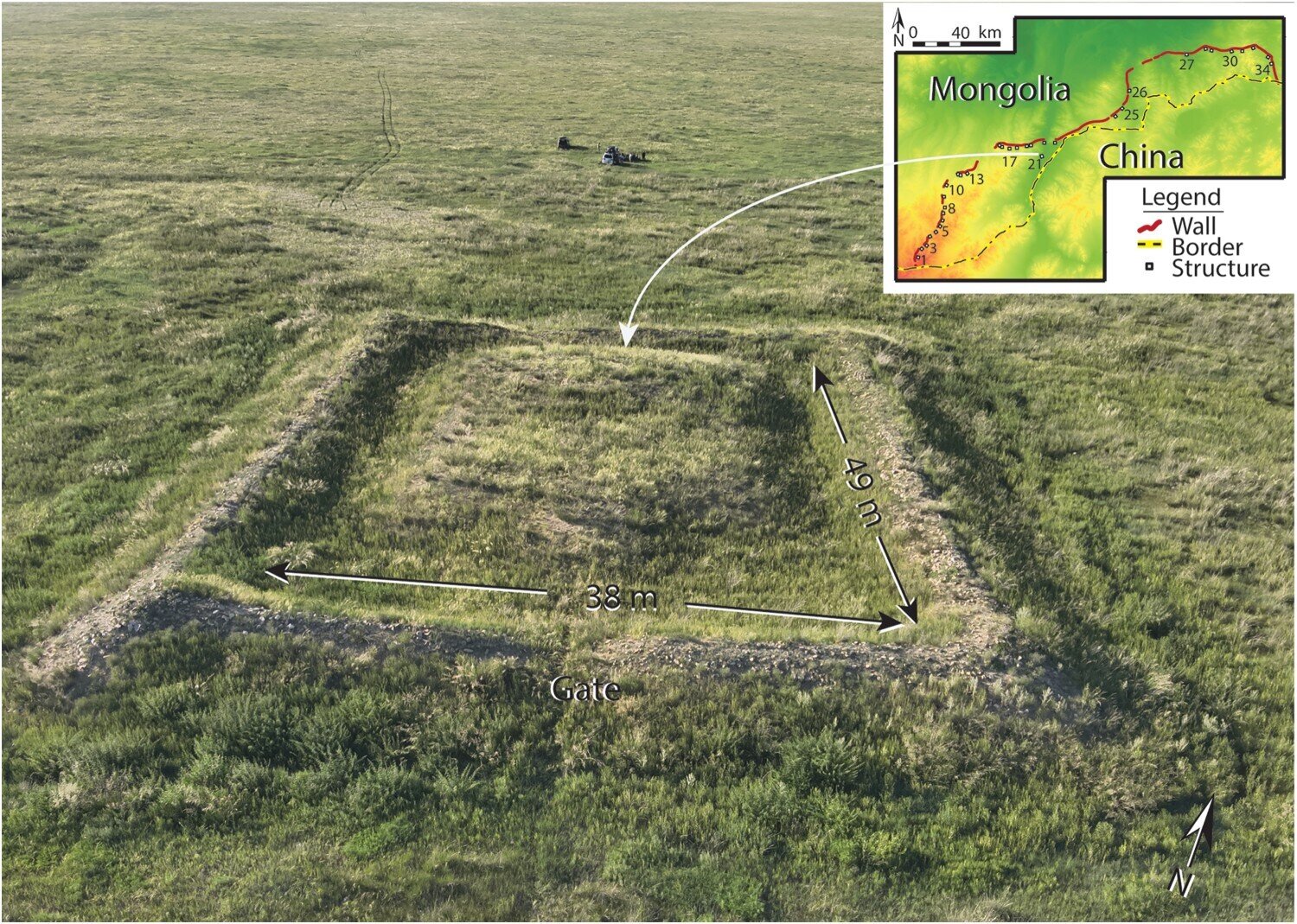A team of archaeologists at the Hebrew University of Jerusalem in Israel, working with a colleague from the National University of Mongolia, has conducted a study of the 405-km wall system in eastern Mongolia known as the Mongolian Arc in order to learn more about its history and purpose. In their paper published in Journal of Field Archaeology, the group describes the techniques and technology they used to study the wall.
One approach involved mapping the wall, which stretches from the Dornod Province to the Sukhbaatar Province, roughly along the border between Mongolia and China. Prior research has shown that it comprises 34 structures and was constructed using both earthen walls and trenches.
They also found that historical records detailing when the wall was built are unclear, putting its construction somewhere between the 11th and 13th centuries. The team also looked at weather records to learn more about what the wall has endured over the years and satellite imagery to learn more about associations between wall locations and terrain. They also conducted field studies to learn more about the composition and condition of the wall.
The research team found some surprises. The biggest was that the wall had large gaps that suggest it was not built to keep out all invaders—it appears it was built quickly in response to certain aggressors. There is also evidence that suggests the wall was built as a means of controlling the movement of people or animals or perhaps as a part of a taxation scheme.
Such theories arose as it became clear that the wall would not have served as much of a barrier—many of its outposts, for example, were in places that offered limited views into the surrounding territory.
2023-12-30 08:00:04
Source from phys.org rnrn
